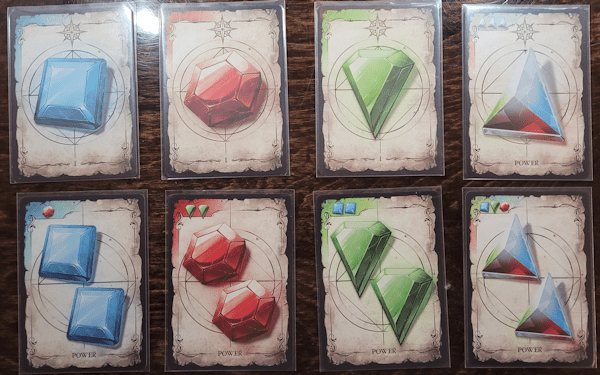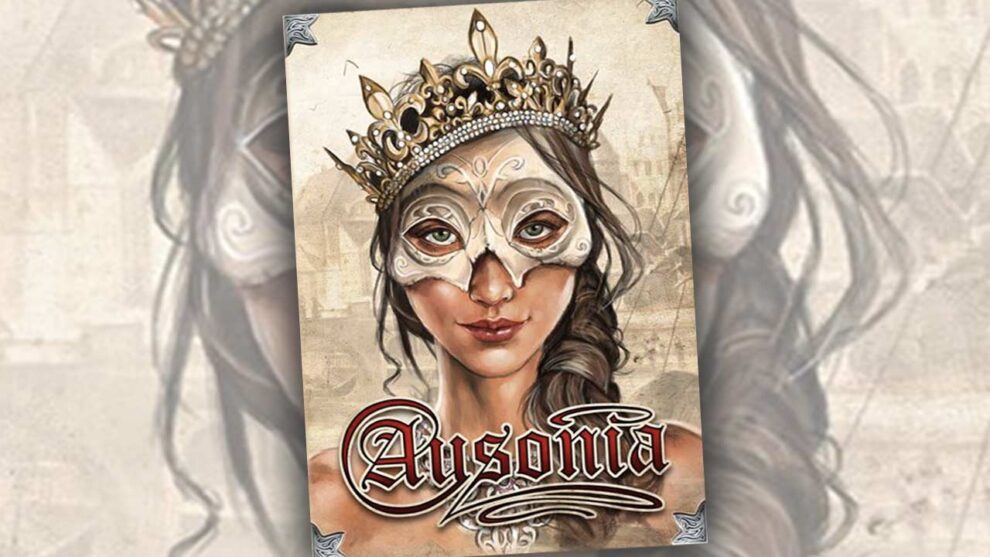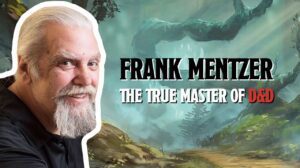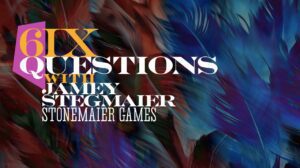When Dominion came on the market in 2008 and invented the deck builder, several publishers tried to capture the same lightning in a bottle with the mechanic. Some did reasonably well (e.g., Legendary) while others seemed to miss the point (e.g., Heroes of Metro City). The sheer number of poorly designed deck builders tended to poison the well for this mechanic—I see the term deck builder in a game’s description and my initial thoughts tend toward the negative.
In early 2020, Lycan Studio, Peter Hornyak, and Zoltán Simon ran a Kickstarter for a deck builder called Ausonia. The first thing that struck me was the gorgeous artwork. I checked it out and was drawn in by the magical 17th century Italian theme (the game takes place after an event called the Witchplague). I was hooked! I pledged at one of the upper levels to ensure that I would receive copies of the two expansions. Then I waited.
When my copy arrived, I got this to the table almost immediately. This game was well worth the wait.

Gameplay
Briefly, this is a deck builder: you start with a small deck of basic cards and your hand is a smaller selection of those cards. Each turn, you use the resources in your hand to purchase cards from a market and add those to your deck. You can also use cards from your hand to perform various actions that can give you advantages or points, called influence. The first player to 60 influence wins.
In that regard, this is very much like any other deck builder out there. Just under the surface, however, there are things that make Ausonia special.
Resources
The resources in the game are called power and are represented by magical gemstones. There are three types (red, green, and blue) of varying rarity as well as some wildcard stones that can be used as any color. The basic cards will provide you with a single power; advanced cards can provide more.

So far so good, but the game does not stop there. As your deck grows you will want to get to the cards that allow you to do things, but you also need power to use them. So the game provides a mechanic called raise that allows you to move cards out of your deck and into a special area to later be converted into sources—power cards that are always considered a part of your hand, but which do not clog up your draw.
Not all power cards can become sources, and it takes two cards in that special area to become a single source. But this mechanic allows deck thinning while increasing your power and your chances of getting to the action cards you want to use.
Actions
Actions are taken with favour cards. These cards generally have two things they can do, and when played (if you have the power to activate them), both abilities can be used (each ability is limited to once per turn). The variety of things that favour cards can do is quite broad. There is, of course, gaining influence, but it goes well beyond that. You can move cards into the raise area to create sources (see above); you can move cards into the seal area where they will remain until the seal is broken and all of those cards come back into your hand for some massive combo possibilities; you can draw cards; manipulate your discard pile; gain foresight into the draw pile; corrupt another player; and so on. Those are all standard actions that use simple keywords and iconography to get the point across. Of course, there are many other abilities that are unique and are explained on the card in more detail.

Guilds
When taking actions, it might require more than just power to activate. They may also require specific conditions, or board states, before the action can take place. Examples include needing to have a certain amount and type of power available to you (you do not spend the power, it just needs to be there), or having performed a previous action of a certain type (e.g., you have to have used a corruption ability prior to activating the card), or you need to have activated a card from a particular faction first.
This last one is interesting. The market in this game is called the offer row. These are four cards taken from the draw pile and placed face up, making them available to be purchased. The draw pile consists of 50 cards—ten cards each from five guilds: Nobles, Merchants, Magicians, Underworld, and Engineers. Each guild leans toward certain mechanics and themes. Building a deck with cards that synergize often means trying to have a few cards from a specific guild.
The expansions add in new guilds with new keywords and new leanings. But the draw pile will always be limited to five guilds and 50 cards—in order to add in a new guild, one must be removed. In this way, the overall feel of the game can shift without diluting anything. This is a lesson I truly wish many other deck builders had learned. (Yes, I am looking at you, Ascension)
Availability
The one major drawback to Ausonia is its availability. Before I started working on this review, I reached out to Lycan Studios and asked if they were planning a reprint of the game. The rather prompt response I received was that they were currently in the middle of a reprint. This gave me some hope that more people might be able to discover this game and see what a truly well-designed deck builder looks like!
Unfortunately, the Lycan Studio website does not appear to have been updated since the Ausonia Kickstarter campaign went live almost four years ago. The company appears to have gone through a name change (?) to Unseen Domains. Under this imprint, they have their Shard Hunters card game on a dedicated website that has not been updated since… well, since the Ausonia Kickstarter campaign went live almost four years ago.
They do have a Facebook presence. There, they are pushing a digital deck builder called Monastery where they have been active as recently as September 2023. Thus, it is safe to say they are not dead (yet). Unfortunately, the last time they mentioned Ausonia was back in 2021, not long after the Ausonia Kickstarter campaign concluded . In other words, I would not hold my breath waiting for this reprint. Those that have this game, tend to want to keep it, as evidenced by the prices the game goes for on eBay and BGG’s Geekmarket (i.e., $70-175).
If you can find it at a price you can afford, I highly recommend getting this game. It is amazing.

Massive Potential and Replayability
Ausonia and its expansions all fit into a very small box. Do not let this fool you. This game does not feel small. There is a lot going on with just a few components. Each guild feels unique and makes its presence known despite having only ten cards in the draw pile. Each favour card is multifaceted, having synergies with not only other cards in its guild, but wonderful abilities that will often make cards of other guilds shine.
None of this even touches on the fact that this is a deck builder with an amazing solo mode.
I have been playing deck builders since they first came out. Some are truly great games. None of them stand up to the beauty and dynamic play of Ausonia. There are a couple of reasons for this:
- Limited Offerings: In most early deck builders (e.g., Thunderstone), every card in the market is available from the start of the game to the finish. Each has a limited supply, sure, but they are all there. The result is a race to get the good cards while multiple market stacks go untouched. In addition, every player’s deck will look quite similar, as an experienced player will immediately see what cards are most efficient. In Ausonia, there are only four cards available at a time and each card is unique. If a player purchases a card, no other player can get one. Efficiency in this case is situational; each card may or may not be the best choice at the time based on what you have already purchased and what others have gone for. At the end of the game, nobody has a similar looking deck. The winner will be the player that can best adapt to a changing landscape.
- Focused Offerings: There are deck builders that offer a limited market similar to how Ausonia does it (e.g., Ascension). The problem with those games (in my very humble opinion) is that the offerings get diluted due to a lack of focus. The way those games attempt to make things interesting is to offer you more options in the supply of cards that might make it to the market. Ausonia does not offer as many cards, but it does not need to: each card has more than one use. If you want to play with a new faction, then another faction is removed so that your ability to get to the new (and old) cards is not reduced. The draw deck is focused on five factions so that each of them can shine.If Ascension had started with a number of heroic factions each with X cards, had you shuffle those in with a number of monstrous factions each with Y cards, then with each expansion added in new heroic and monstrous factions that you swapped in (i.e., you always played with a set number of heroic and monstrous factions), I think I might still be collecting and playing that game today.
These two aspects of Ausonia make it all the more sad that this game is both out of print and not being expanded upon. You can add more and more guilds without causing the game to become a watered down version of itself. Of all the deck builders I have played, none can compare. Ausonia is king of the hill.











Add Comment